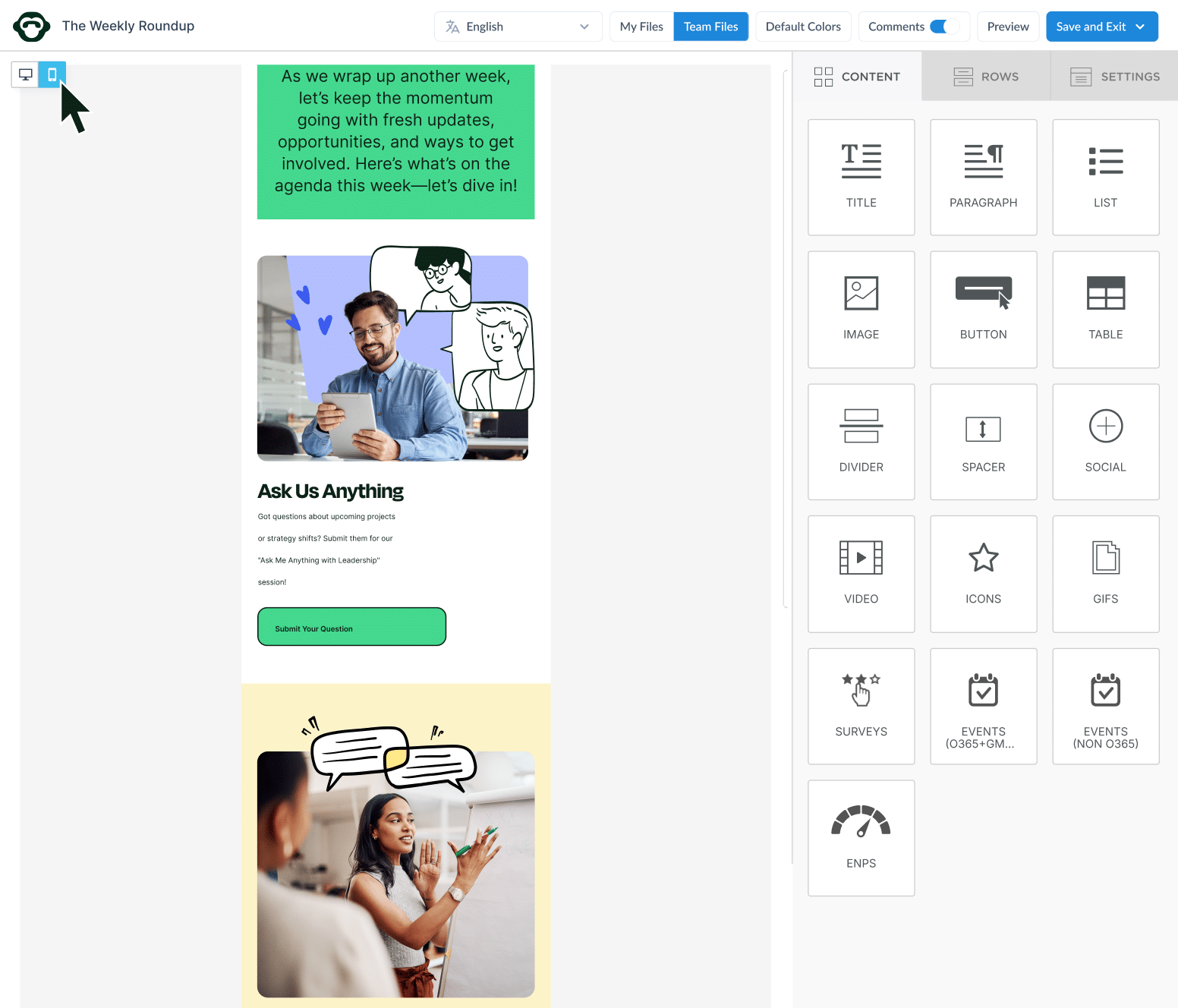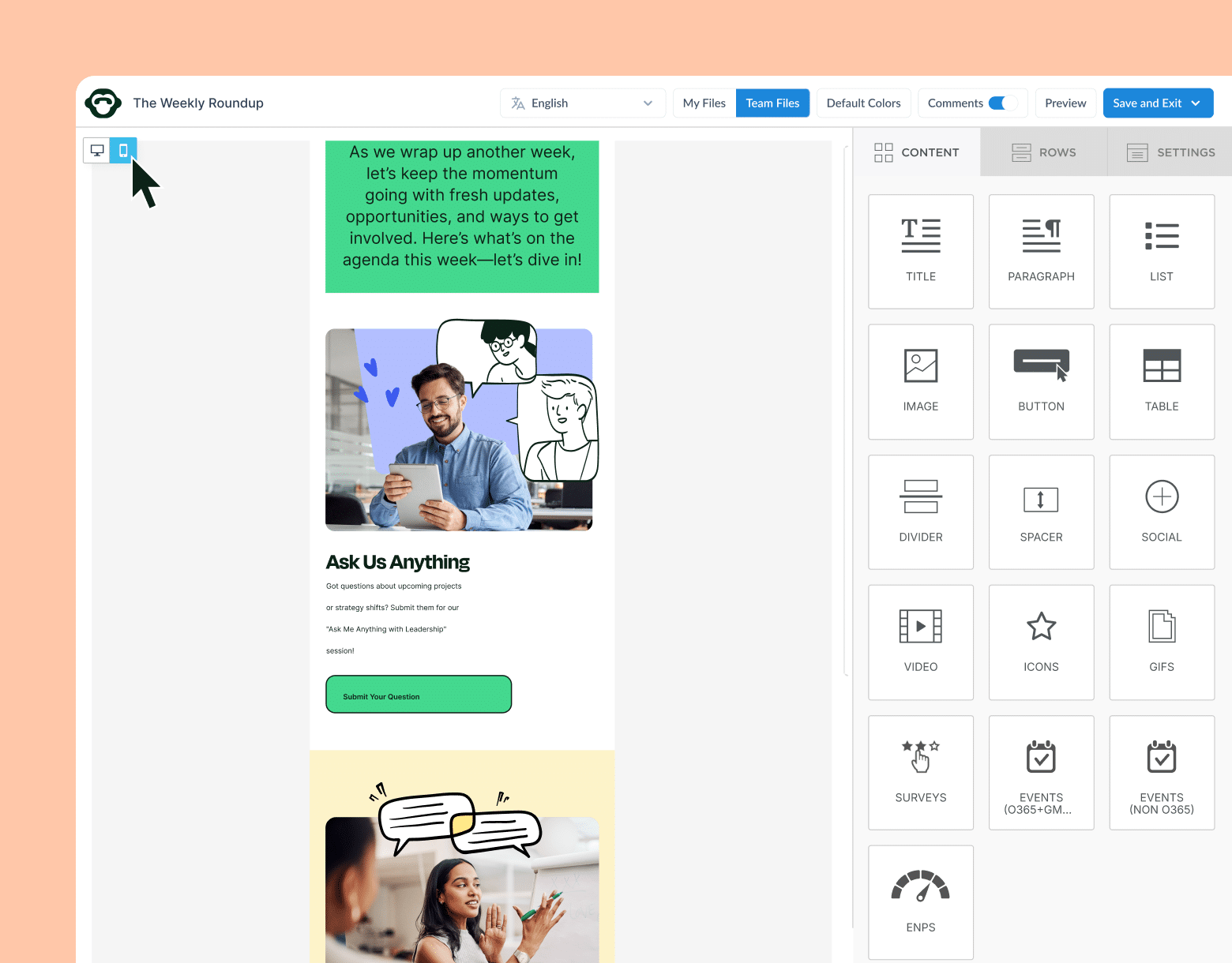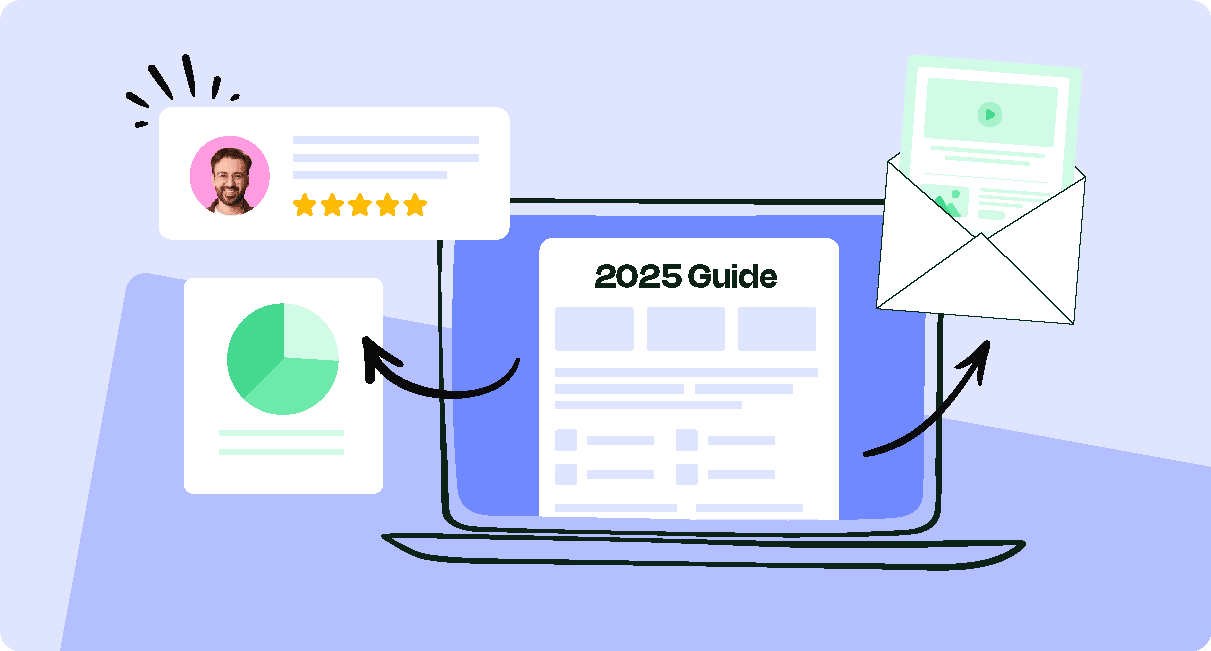Engaged employees don’t happen by accident—they’re built through strong internal communication. Follow along as we share the purpose of a newsletter in the workplace and the unexpected benefits of a company newsletter.
How do you ensure your employees feel informed, engaged, and valued when you and leadership already feel stretched? For many companies, the answer lies in a timeless but evolving tool: the internal newsletter.
The purpose of a company newsletter is to humanize leadership, celebrate achievements, and connect teams across different departments, geographies, and perspectives. A well-crafted newsletter can be a powerful communication channel that resonates across your entire workforce.
Read along as we break down company newsletter benefits that can change your internal comms game. We’ll look at how email newsletter benefits translate into tangible value for employees and leadership, and show how to maximize the benefits of a company newsletter by focusing on clear goals and objectives.
Ready to create fun and interactive employee newsletters with ease? You can with ContactMonkey’s employee newsletter software features.
Take a self-guided tour of ContactMonkey
See how our key features can streamline your internal communications.
Take product tour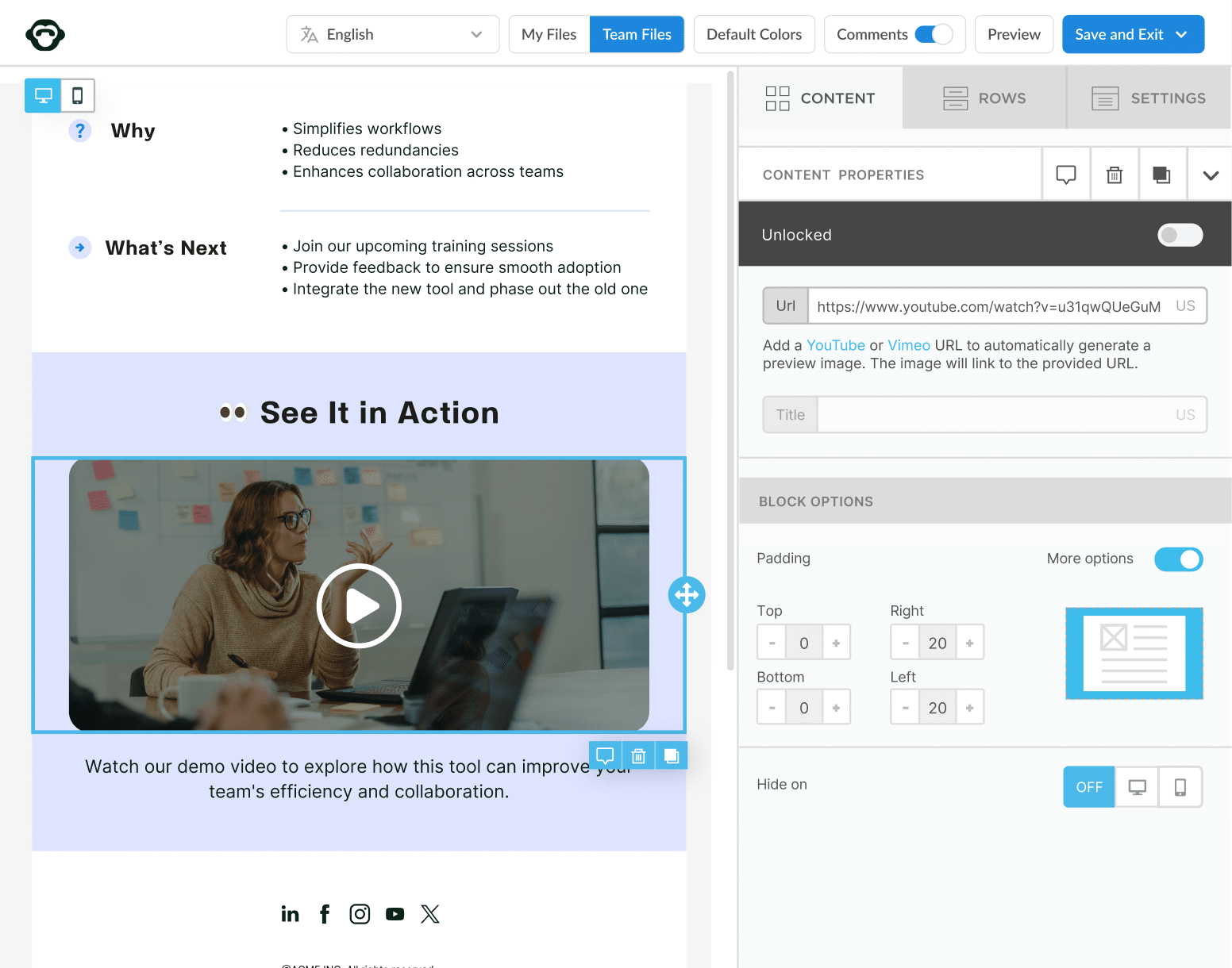
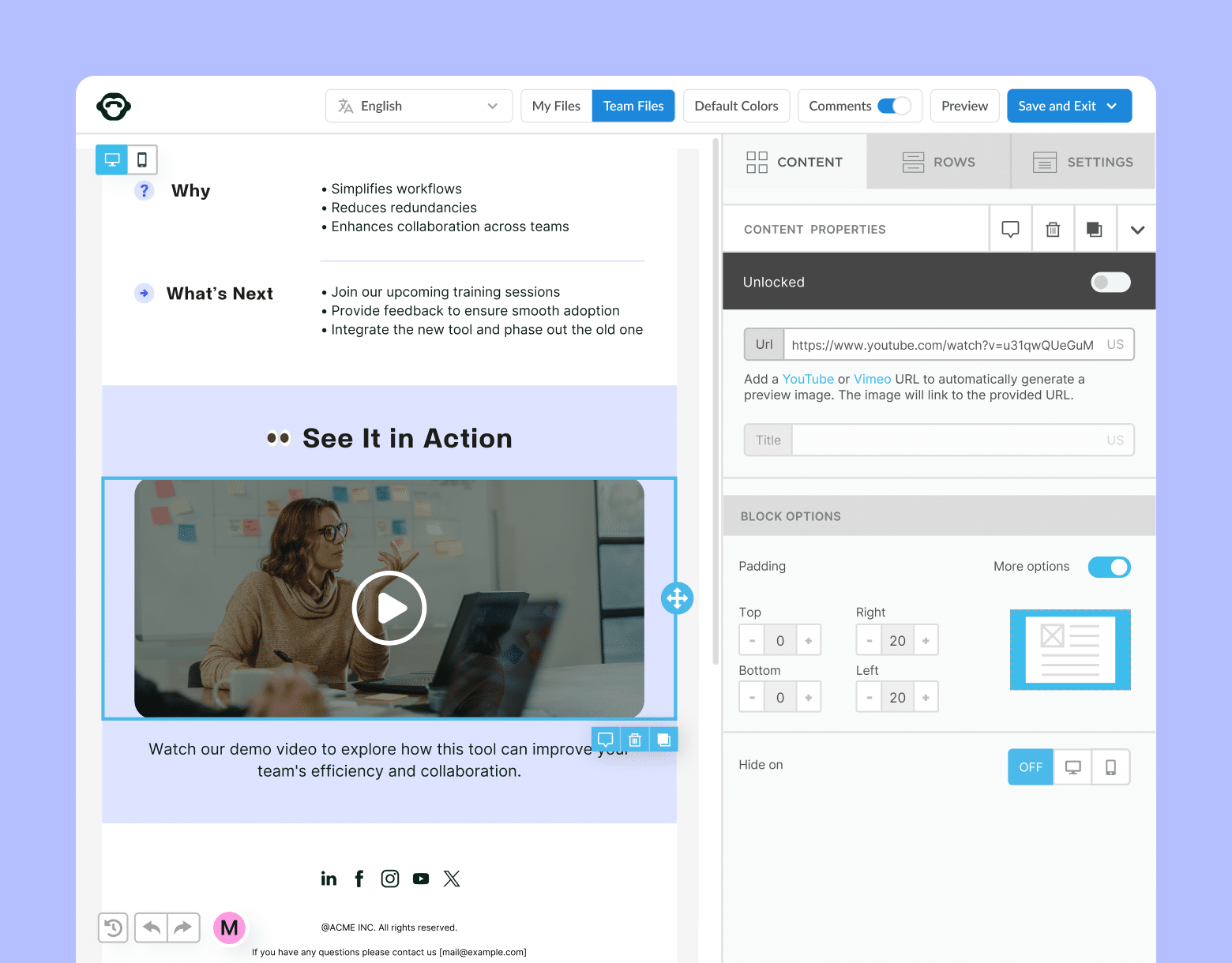
What is an Employee Newsletter?
An employee newsletter is a recurring internal communication sent to your team, typically via email. Its purpose is to share important news, updates, insights, and stories within your organization.
By nature, a team newsletter is a targeted publication where employees are the sole audience.
Why Your Company Needs an Internal Newsletter
Every organization needs an internal newsletter because it’s one of the most effective ways to improve communication, build culture, and keep employees aligned. When done well, the benefits of a company newsletter include higher retention, stronger culture, and more connected teams.
The purpose of a newsletter in a workplace is to connect people to information, each other, and the bigger picture. The benefits of internal newsletters are too valuable to ignoreand with the right tool, they’re easier to achieve than ever. Still not convinced? Check out our article on why employee newsletters are important!
10 Benefits of a Company Newsletter
When internal comms pros gather essential information and present it in a compelling format (like a newsletter), companies keep employees connected to the bigger picture. Here’s a breakdown of the key company newsletter benefits every organization should be leveraging:
1. Centralized company updates
One of the top benefits of internal newsletters is their ability to serve as a single, trusted source of truth. Instead of piecing together updates from Slack, email threads, or all-hands meetings, employees receive one clear communication channel for company announcements, policy changes, and major milestones. This reinforces the purpose of a company newsletter: delivering consistent, reliable communication that keeps everyone aligned.
PRO TIP: Add a “Need‑to‑Know” banner at the top of every issue. By reserving this space for mission‑critical items only, you train employees to scan the newsletter first, reducing reliance on ad‑hoc emails.
2. Improved team and organizational alignment
When everyone understands where the company is headed and how their role fits into the plan, teams collaborate more effectively. By sharing strategy updates, cross-functional news, and leadership messages, newsletters help achieve alignment across departments. This is one of the most measurable email newsletter benefits, especially in fast-scaling or distributed organizations.
PRO TIP: Close each strategic update with a micro‑CTA like “Here’s how your team can help.” It bridges the gap between high‑level goals and day‑to‑day execution.
3. Increased employee engagement
Recognition and storytelling are key to engagement, and newsletters are an ideal vehicle for both. By spotlighting employee achievements, showcasing team wins, and celebrating milestones, you reinforce the purpose of an employee newsletter: to motivate, connect, and inspire. This emotional connection boosts morale and makes employees feel valued.
PRO TIP: Rotate “Win of the Week” across departments. Peer‑nominated shout‑outs boost morale and give every corner of the company a chance to shine.
4. Reduced email overload and clutter
Constant pings and one-off messages lead to inbox fatigue. A well-timed, consolidated internal newsletter simplifies communication by offering a predictable cadence of updates. This is one of the most practical benefits of a company newsletter—it streamlines messaging while reducing noise, saving employees time and cognitive energy.
PRO TIP: Publish and stick to a distribution schedule (e.g., every other Tuesday at 10 a.m.). Consistency teaches employees to expect the newsletter and builds anticipation.
5. Reinforced company culture
Company culture isn’t built in the handbook—it’s built in the stories you share. Internal newsletters help reinforce culture by highlighting values in action, showcasing diversity and inclusion initiatives, and amplifying employee voices. This aligns directly with the purpose of a newsletter in a workplace, which includes deepening cultural connection through consistent storytelling.
PRO TIP: Use a “Culture Snapshot” photo block and include images from volunteer days, office events, or remote work setups to make values visually tangible.
6. Community and team-building
Especially in remote and hybrid work environments, employees crave connection. Featuring team spotlights, personal milestones, event recaps, or fun moments helps build community and foster relationships across teams. This is one of the most human-centered benefits of internal newsletters, and a powerful way to remind employees that they’re part of something bigger.
PRO TIP: Embed a rotating “Coffee Chat Roulette” signup link. Randomly pairing employees for 15‑minute virtual coffees sparks cross‑team relationships at scale.
7. Increased transparency with leadership
Transparency builds trust—and newsletters make it easier for leadership to share business decisions, updates, and future plans. By consistently communicating the “why” behind company actions, you fulfill a critical purpose of a company newsletter: keeping employees informed and involved. This kind of openness enhances credibility and reduces speculation or confusion.
PRO TIP: Add a “You Asked, We Answered” section where executives address top questions submitted anonymously. Transparency plus dialogue equals credibility.
8. Employee knowledge sharing and learning
One of the often-overlooked email newsletter benefits is the ability to share insights, training materials, and resources that support employee development. Whether it’s a new tool, a best practice, or a quick tutorial, newsletters help scale learning across teams. This supports the purpose of a newsletter in the workplace by empowering employees to grow and stay up-to-date.
PRO TIP: Track clicks on learning resources and feature the “Most‑Read How‑To” in the next issue. Public recognition nudges more employees to engage with training content.
9. Encourages feedback and dialogue
A great internal newsletter builds a two-way communication channel. Including surveys, polls, or open questions gives employees a voice and helps you gather valuable insights. This feedback loop supports the purpose of an employee newsletter by making communication more inclusive and responsive—two must-haves in modern internal comms.
PRO TIP: Close every issue with a one‑click emoji pulse (“How did this edition land for you?”). The quick feedback gives you instant sentiment data without survey fatigue.
10. Strengthened employer branding
Your internal brand matters just as much as your external one. A well-designed, engaging newsletter shows that your organization values thoughtful communication and cares about employee experience. It reflects a strong internal identity and helps reinforce the benefits of a company newsletter as a strategic tool for shaping perception, both inside and outside the organization.
PRO TIP: Maintain a mini style guide (fonts, color palette, voice) for your newsletter team. Consistent branding turns each issue into a recognizable touchpoint that deepens identity.
Company newsletter benefits are proof that internal communication, done right, can transform the employee experience.
What is the Purpose of the Employee Newsletter?
The purpose of a newsletter in a workplace is multifaceted: it informs, motivates, and nurtures the community.
Understanding the purpose of a newsletter in a workplace helps internal communicators deliver real value and consistency at scale.
Here are the core purposes of an employee newsletter:
- Keep employees informed: One of the top company newsletter benefits is sharing accurate, timely information across teams. It keeps everyone aligned on business goals, policies, and priorities.
- Boost engagement: A major benefit of a company newsletter is increased motivation through employee recognition, team wins, and culture stories.
- Strengthen culture and community: The purpose of a company newsletter includes reinforcing values, traditions, and your internal brand identity. It should create belonging across departments, especially in hybrid workplaces.
- Create intentional connection: Beyond information, the purpose of an employee newsletter is to connect people to each other and the company’s mission. Encourage two-way communication with feedback tools, supporting the email newsletter benefits of interactivity and inclusivity.
- Support change and transitions: During rebrands or restructuring, newsletters serve as a reliable channel to communicate with clarity and care, fulfilling the purpose of a newsletter in the workplace.
When done right, employee newsletters deliver meaning. What exactly does “done right” look like? This post provides examples of employee newsletters.
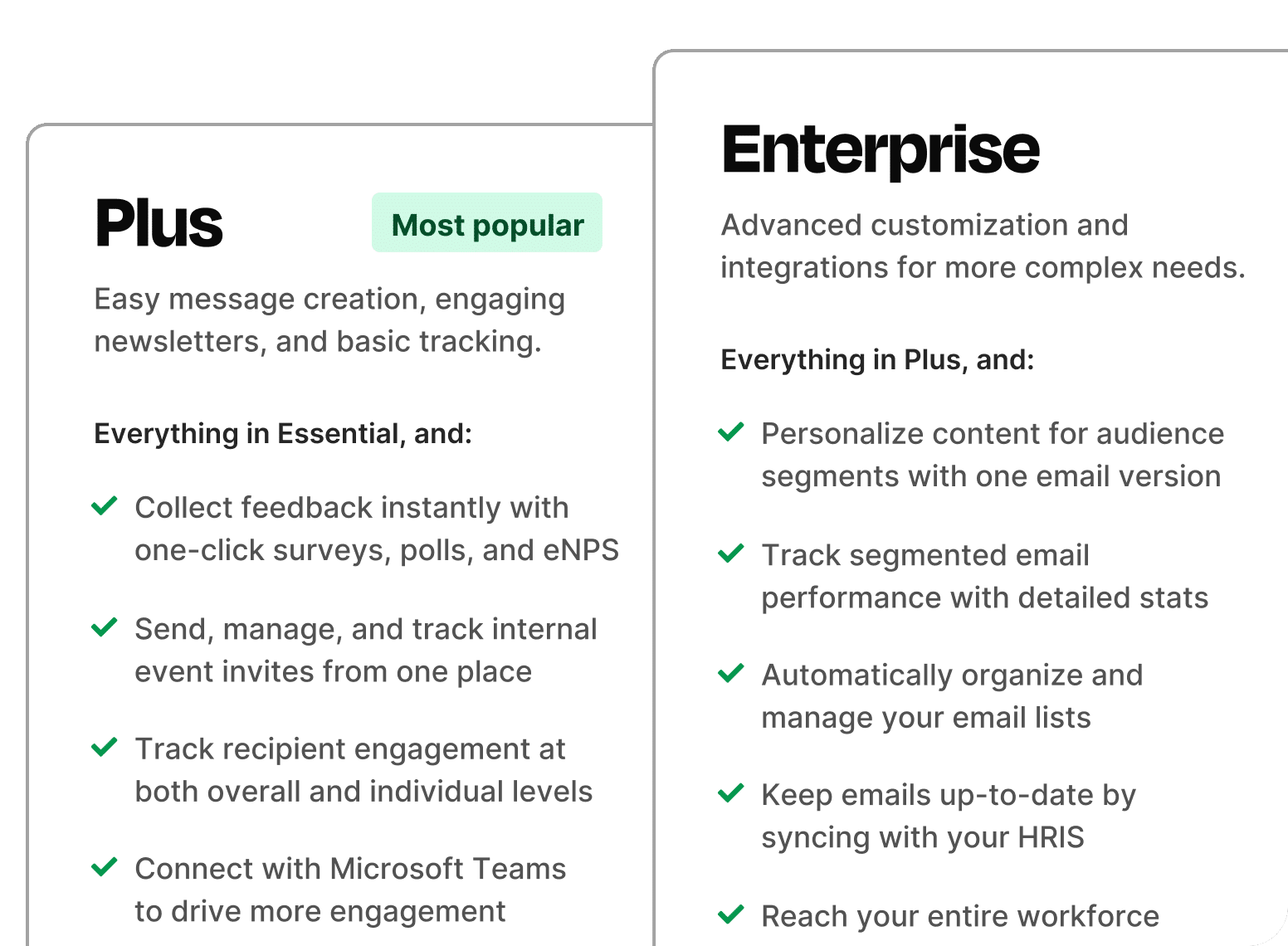
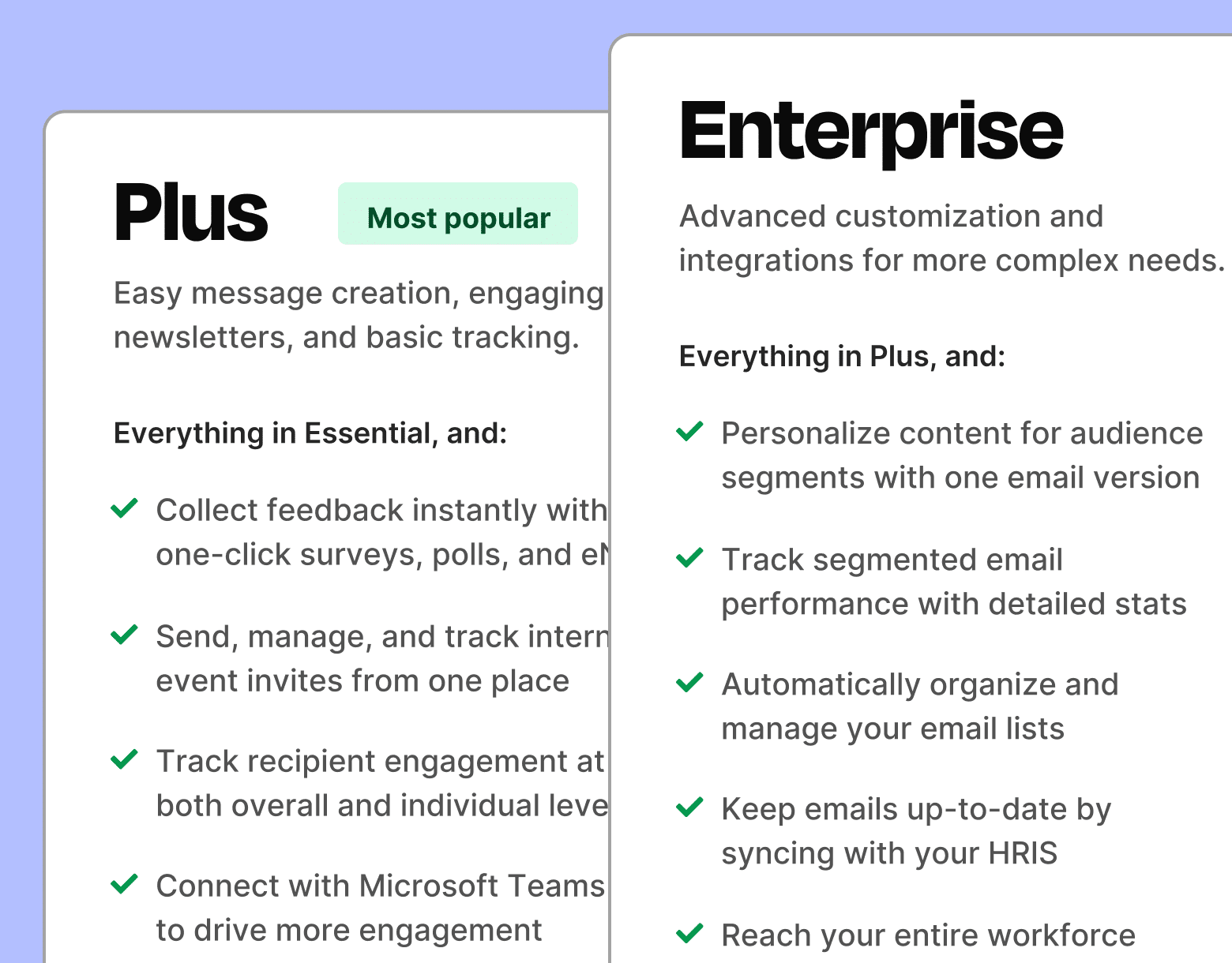
What are the Goals and Objectives of an Internal Company Newsletter?
Before you choose fonts or craft subject lines, anchor every edition to the purpose of employee newsletter communication: to turn information into alignment and alignment into action.
Below, we’ve split the goals of your internal newsletter into two clear goal categories: qualitative and quantitative. Here’s what a results-driven internal newsletter should aim to achieve:
Quantitative goals:
- Information accessibility: A reliable source of truth proves the tangible benefits of a company newsletter by reducing duplicate questions and cutting time lost to hunting for updates.
Metric focus: Open rate, unique clicks, and read-time. - Employee engagement: Showcasing wins, and voices quantify the benefits of internal newsletter campaigns—higher interaction signals higher morale.
Metric focus: Click‑through rate, emoji reactions, quiz completions. - Learning & development uptake: When a newsletter pushes skill‑building content, the resulting uptick in course finishes becomes a concrete email newsletter benefit.
Metric focus: Training‑module completions and resource‑download counts. - Alignment with business goals: Clear linkage between updates and strategy turns the abstract company newsletter benefits into measurable performance gains.
Metric focus: Survey accuracy on OKRs, and attendance at goal‑related events. - Consistency & cadence: Regularity reinforces trust—another quantifiable benefit of a company newsletter that trims ad‑hoc message overload.
Metric focus: On‑time delivery rate and month‑over‑month readership growth.
Qualitative goals:
- Cultural reinforcement: Stories about values‑in‑action illustrate the living culture and fulfill the deeper purpose of employee newsletter storytelling.
- Leadership visibility: CEO notes and video snippets humanize executives, proving the relational benefits of internal newsletter dialogue.
- Two‑way communication: Embedded polls and open‑text feedback (through Employee Feedback Features, for example) to shift the channel from broadcast to conversation—an essential email newsletter benefit that builds trust.
- Change‑management support: During restructures or policy shifts, familiar formatting calms uncertainty, underscoring the stabilizing purpose of a newsletter in a workplace.
- Internal employer branding: Tone, visuals, and voice combine to remind staff why the organization is special—long‑term company newsletter benefits that surface in pride and retention conversations.
Leverage employee newsletter analytics to measure the numbers, but also look out for the qualitative response to your internal communications. Analytics and measurable internal comms KPIs prove your efforts through hard data, but anecdotal evidence and employee stories can as well.
What Makes a Great Employee Newsletter?
You’ve probably seen your fair share of newsletters that go straight to the trash. So, what sets apart the good from the great?
Here’s what makes a great employee newsletter:
- Purpose-driven: Clear intent behind every section.
- Visually engaging: Clean design, mobile-responsive, and easy to navigate.
- Consistently delivered: Weekly or monthly—as long as it’s reliable.
- Tailored to the audience: Segmented if needed, relevant to each department and role.
- Interactive: Encourages clicks, replies, or participation.
- Measurable: Track what works and iterate.
Want to know how to create a successful employee newsletter? Start with empathy. Understand your audience, respect their time, and make every issue worth opening. Plus, nail design with these employee newsletter design tips!
Watch ContactMonkey LIVE in action
Join live demo
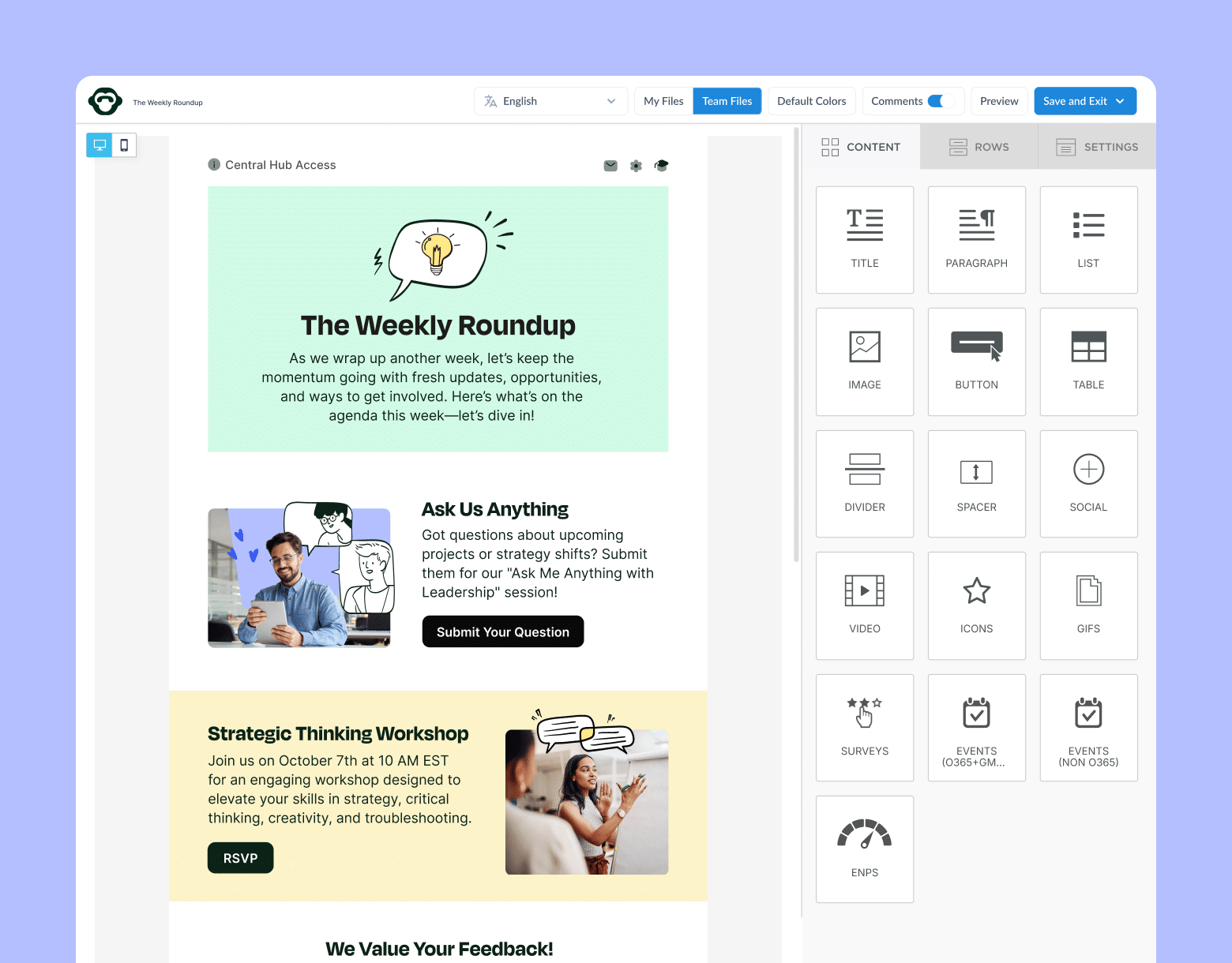
What to Include in an Employee Newsletter?
Here’s a quick employee newsletter checklist of content types to inspire your next edition:
- Company announcements
- Employee shoutouts and birthdays
- KPI updates and goals progress
- Upcoming events or training
- Tips and resources for productivity or wellbeing
- Photos from recent team events
- Leader messages or Q&As
- Employee newsletter surveys or polls to collect feedback
- Learning & development resources
- Diversity, equity & inclusion highlights
These align with both the email newsletter benefits and the purpose of a newsletter in a workplace—serving information in a way that supports employees’ day-to-day. You can also enhance your newsletters with these employee newsletter ideas that are designed to boost engagement.
How to Write an Effective Employee Newsletter?
If you want to know how to write an employee newsletter that doesn’t feel like corporate wallpaper, start here:
- Know your audience: Tailor your tone, language, and content to reflect your company culture and what matters most to your teams.
- Start strong: Use a clear, compelling subject line and an engaging intro to grab attention right from the start.
- Be concise: Keep it short and skimmable, using headers, bullets, and short paragraphs so readers can find what they need quickly.
- Include a call to action: Give employees a next step—RSVP, take a survey, read more, or share feedback.
- Make it measurable: Use tools like ContactMonkey to track opens, clicks, and engagement so you can improve with every send.
Overall, make it useful and human. Speak like a person, not a policy doc.
BONUS: Since most employee newsletters fall flat, use this article on employee newsletter content strategies to nail the writing for employee newsletters and substance in your upcoming newsletters.
How to Design, Create, Send and Track an Employee Newsletter?
Use a modern tool like ContactMonkey to streamline every step—from building to measuring your newsletter’s impact. Here’s how to do it right:
- Make it visually appealing: Use our drag-and-drop Email Builder Feature to create clean, on-brand designs that are mobile-friendly and easy to scan.
- Focus on relevant content: Share what employees actually care about—team wins, leadership updates, upcoming events, and useful resources.
- Personalize where possible: Segment content by department, location, or role using Dynamic Content Feature and the List Management Feature to keep things relevant for every reader.
- Send it seamlessly: Use ContactMonkey to send directly from native platforms—no need for clunky platforms or external logins thanks to Outlook and Gmail integration.
- Time it right: Schedule sends based on when your employees are most likely to open and engage with their emails.
- Track what works: Use the real-time Analytics Dashboard Feature to measure open rates, click-throughs, and read time. See what content lands—and what gets skipped.
- Gather feedback: Include emoji reactions, quick polls, or pulse surveys to collect employee input directly from the newsletter.
With the right tool and a clear strategy, your employee newsletter can be a powerful driver of engagement and connection. If you’re ready to save time without sacrificing quality, book a free demo with one of our experts, today!
